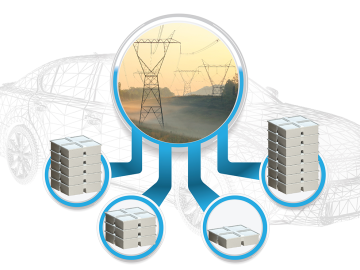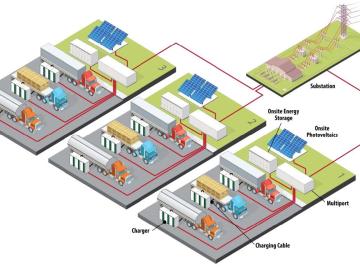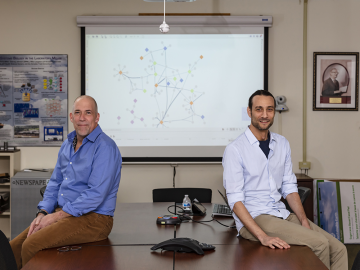
Filter News
Area of Research
- Advanced Manufacturing (4)
- Biology and Environment (22)
- Computational Biology (1)
- Computational Engineering (2)
- Computer Science (6)
- Energy Science (53)
- Fusion and Fission (3)
- Fusion Energy (6)
- Isotopes (3)
- Materials (22)
- Materials for Computing (3)
- Mathematics (1)
- National Security (4)
- Neutron Science (24)
- Nuclear Science and Technology (4)
- Quantum information Science (1)
- Supercomputing (13)
- Transportation Systems (2)
News Type
News Topics
- (-) Artificial Intelligence (16)
- (-) Big Data (17)
- (-) Biomedical (11)
- (-) Biotechnology (4)
- (-) Chemical Sciences (13)
- (-) Composites (11)
- (-) Cybersecurity (3)
- (-) Environment (48)
- (-) Fusion (9)
- (-) Isotopes (5)
- (-) Neutron Science (27)
- (-) Physics (4)
- (-) Security (1)
- (-) Transportation (36)
- 3-D Printing/Advanced Manufacturing (34)
- Advanced Reactors (13)
- Bioenergy (17)
- Biology (21)
- Buildings (21)
- Clean Water (14)
- Computer Science (42)
- Coronavirus (11)
- Critical Materials (12)
- Emergency (1)
- Energy Storage (32)
- Exascale Computing (1)
- Fossil Energy (1)
- Frontier (1)
- Grid (22)
- High-Performance Computing (12)
- Hydropower (6)
- Irradiation (2)
- ITER (3)
- Machine Learning (14)
- Materials (36)
- Materials Science (34)
- Mathematics (3)
- Mercury (3)
- Microscopy (11)
- Molten Salt (5)
- Nanotechnology (12)
- National Security (3)
- Nuclear Energy (19)
- Partnerships (2)
- Polymers (10)
- Quantum Computing (5)
- Quantum Science (12)
- Simulation (9)
- Space Exploration (10)
- Statistics (1)
- Summit (8)
Media Contacts

Scientists at ORNL developed a competitive, eco-friendly alternative made without harmful blowing agents.

Warming a crystal of the mineral fresnoite, ORNL scientists discovered that excitations called phasons carried heat three times farther and faster than phonons, the excitations that usually carry heat through a material.

When aging vehicle batteries lack the juice to power your car anymore, they may still hold energy. Yet it’s tough to find new uses for lithium-ion batteries with different makers, ages and sizes. A solution is urgently needed because battery recycling options are scarce.

Researchers from Yale University and ORNL collaborated on neutron scattering experiments to study hydrogen atom locations and their effects on iron in a compound similar to those commonly used in industrial catalysts.

Researchers at ORNL zoomed in on molecules designed to recover critical materials via liquid-liquid extraction — a method used by industry to separate chemically similar elements.

Critical Materials Institute researchers at Oak Ridge National Laboratory and Arizona State University studied the mineral monazite, an important source of rare-earth elements, to enhance methods of recovering critical materials for energy, defense and manufacturing applications.

The presence of minerals called ash in plants makes little difference to the fitness of new naturally derived compound materials designed for additive manufacturing, an Oak Ridge National Laboratory-led team found.

Researchers at Oak Ridge National Laboratory have designed architecture, software and control strategies for a futuristic EV truck stop that can draw megawatts of power and reduce carbon emissions.

ORNL researchers discovered genetic mutations that underlie autism using a new approach that could lead to better diagnostics and drug therapies.

Oak Ridge National Laboratory scientists designed a recyclable polymer for carbon-fiber composites to enable circular manufacturing of parts that boost energy efficiency in automotive, wind power and aerospace applications.


